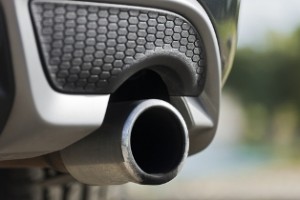Diesel vehicle PM10 emissions show decline in London
Defra claims figures show a ‘significant decline’ in particulate matter PM10 emissions from diesel exhausts in London
Emissions of particulate matter PM10 from diesel exhausts in London have shown a ‘significant decline’ in recent years, according to the Department for the Environment, Food and Rural Affairs (Defra).
Figures revealed by Defra minister Dan Rogerson show that diesel emissions for black cabs, diesel cars, heavy goods vehicles (HGVs), buses and coaches have all fallen over the ten years from 2002 to 2011.
The figures were revealed in response to a written parliamentary question from Labour MP for Poplar and Limehouse, Jim Fitzpatrick, who asked for information on the level and trend in particulate emissions from diesel vehicles in central and Greater London.
Mr Rogerson answered that, according to the most recent data based on annual estimates by the National Atmospheric Emissions Inventory (NAEI), there has been a ‘significant decline in diesel exhaust emissions over this period’.
In total, exhaust PM10 emissions from a range of diesel vehicles in central London have declined from 0.107 kilotonnes in 2002 to 0.038 kilotonnes in 2011, with the biggest reduction appearing to come from buses and coaches.
And, figures for Greater London show that overall there has been an even larger decline in PM10 emissions from diesel vehicles from 1.209 kilotonnes in 2002 to 0.540 kilotonnes in 2011.
However, the data — available on Hansard — suggests that the biggest fall in PM10 emissions appears to have come from diesel light goods vehicles.
EU legal compliance
Furthermore, Mr Rogerson also said he expected to have new projections for when the UK is likely to comply with EU air quality standards in 2014.
Mr Fitzpatrick asked the Defra minister when London was expected to comply with EU air quality legal requirements, to which Mr Rogerson replied that central London was compliant with ‘the majority of UK and EU standards for air pollution’.
Currently, London is expected to be compliant with limit values for PM2.5 by 2020 when the legal requirements for fine particulates come into force, but it is not expected to meet EU limits for nitrogen dioxide until 2025.
Mr Rogerson said: ‘Meeting EU standards for nitrogen dioxide remains a challenge for many large urban areas in the UK and across Europe.’
And, the minister said that although central London is compliant with the ozone target value for health, it currently exceeds the non-mandatory, long-term objective for this pollutant, adding that ‘no projections are available for when we expect it to meet this objective’.
Meanwhile, London is compliant with EU limits on the pollutant benzo[a]pyrene, according to Mr Rogerson, but ‘does not currently meet the non-mandatory national objective for this pollutant as set out in the Air Quality Strategy 2007’.

















If the data that the parliamentary response is based upon is based on estimates of annual emissions, then the correct response is that ESTIMATES of diesel emissions have shown a decline. These large drops in estimated emissions have not shown a corresponding improvement in air quality, indicating that the estimated emissions data is still not quite matching the emissions in the real urban environment.